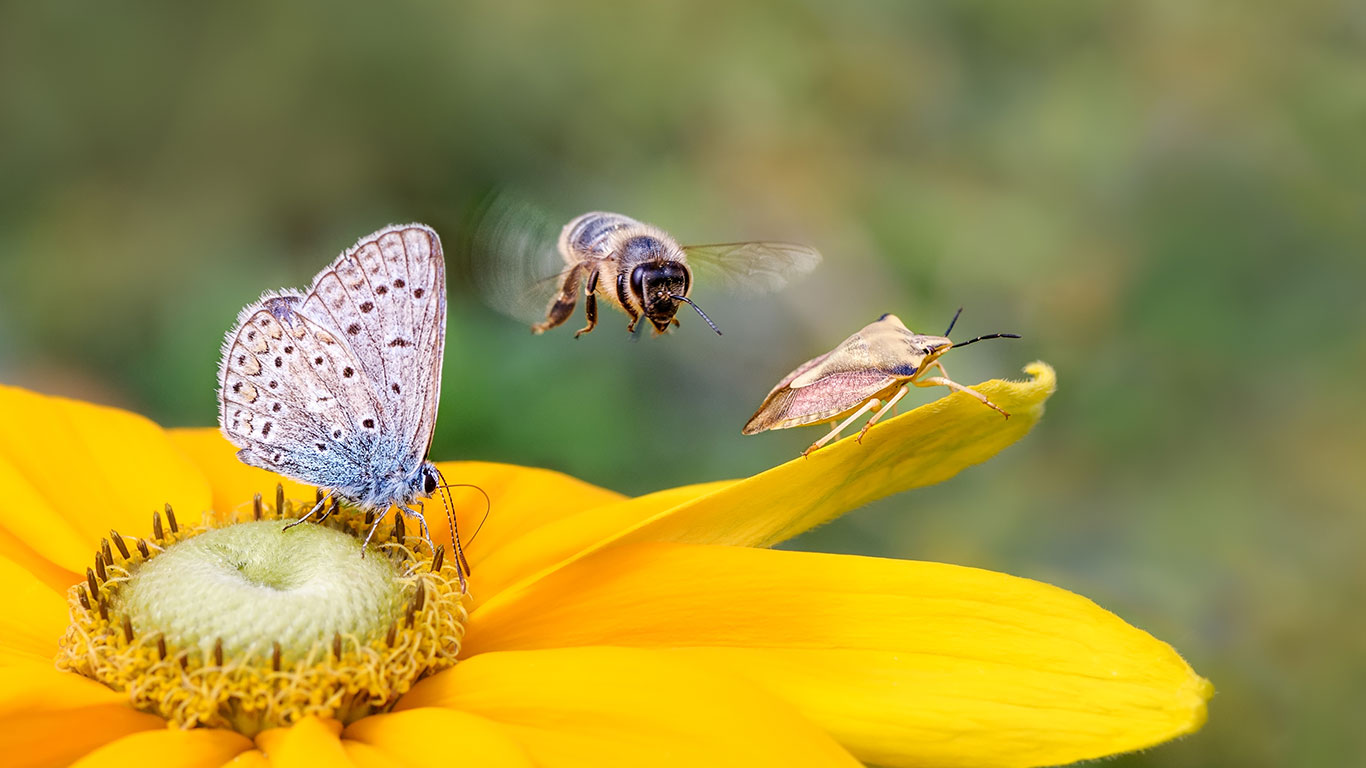The North Carolina Pollinator Conservation Alliance works together for butterflies and bees

The importance of pollinators to our food supply and natural ecosystems has received intense national attention in recent years. Pollinators are declining at alarming rates across most of the nation, and natural resource professionals and governmental agencies are scrambling to improve habitats for these critical species. Over the last two years, agencies and organizations across the state have worked for a common forum in North Carolina to support pollinator conservation. It began with a simple conversation I had with another pollinator scientist, and the effort has now blossomed into the foundation of a statewide, multi-organization partnership to promote pollinator and habitat conservation.
After countless phone calls and diligent planning, the first meeting of the North Carolina Pollinator Conservation Alliance (NCPCA) was convened in the fall of 2017. Since then, NCPCA has grown to include more than 30 organizations including the North Carolina Wildlife Federation, and now represents local, state and federal governments, non-govern mental organizations, utility companies and private entities.
NCPCA strives to support the health and diversity of pollinators in North Carolina through protection, restoration, and creation of pollinator habitat. Maintaining species diversity is crucial to providing ecosystem resilience in the face of future environmental change. It is vital to create and maintain pollinator habitat and early successional areas that benefit a broad array of wildlife species, to include pollinating insects. Early successional habitat requires some form of disturbance—such as burning, mowing, and grazing—to avoid transition to forest, but it includes forbs and shrubs and provides excellent habitat and food for numerous species.
In addition to pollinator benefit, planting native species and creating habitat has countless advantages for the public. The management of diverse, native vegetation, particularly in riparian corridors, can improve water quality and aid in streambank stabilization. Densely planted and deep-rooted vegetation can help slow the flow of storm water across the landscape, thereby allow ing for increased soil infiltration. Native bees provide free pollination services and are specialized for foraging on flowers, such as squash, berries or orchard crops. More than 70 percent of crops require either insect pollination or have higher production because of pollinating insects. Native habitat also acts as a “carbon sink.” And for projects that are on commercial or government-owned property, there are the benefits of increased aesthetic appearance and decreased maintenance costs.
Whether inter or intra-agency, communication is key to pollinator conservation. Though still in its infancy, the NCPCA continues to gain inter est and support. We are working to foster communication among our partners, stakeholders, and interested parties. We hope to develop and disseminate best management practices to enhance habitat and pollinator diversity, as well as act as a clearinghouse for pollinator science and information. Our goal is to collaborate and coordinate with all levels of government to establish protective mechanisms for pollinators and their habitat in North Carolina. We have some ground to cover but are excited for the challenge.

